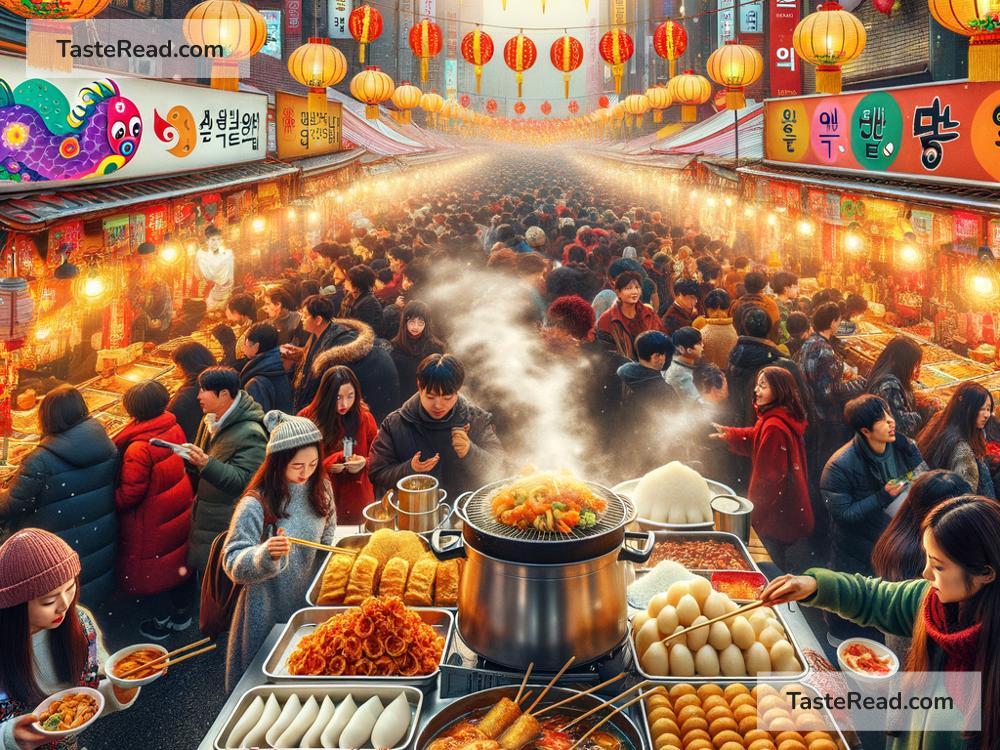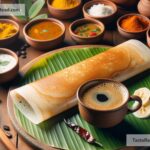Discovering South Korean Street Food During Lunar New Year
Lunar New Year is one of the most important holidays in South Korea. During this time, families gather, traditions come alive, and the streets fill with colorful decorations and festive foods. Across the country, people celebrate the holiday with special meals, prayers for prosperity, and gratitude for good fortune. One of the most exciting parts of the Lunar New Year in South Korea is the street food! The rich smells, sizzling pans, and vibrant flavors make it a feast for the senses.
If you visit South Korea during Lunar New Year, exploring the bustling food stalls and markets is a must. Here’s a closer look at some popular street foods that make this celebration extra special.
Tteokbokki – Spicy Rice Cakes
Tteokbokki is one of South Korea’s most iconic street foods. During Lunar New Year, when traditions revolve around rice cakes, this spicy and chewy delight becomes even more meaningful. These soft, cylinder-shaped rice cakes are often cooked in a sauce made of gochujang (fermented chili paste), soy sauce, sugar, and garlic. The result is a dish that’s both sweet and spicy, with a comforting texture.
Many vendors add extras like boiled eggs, fish cakes, or cheese to make their tteokbokki unique. This dish is especially popular on chilly winter nights when it warms both your belly and soul. People queue up at street stalls to enjoy a steaming bowl as they revel in the festive spirit.
Hotteok – Sweet Pancakes
Hotteok is another favorite, especially for those with a sweet tooth. These Korean-style pancakes are filled with a mixture of brown sugar, cinnamon, and crushed nuts. When cooked on a hot griddle, the fillings melt into a warm, gooey syrup. The outside becomes crispy, while the inside remains soft and chewy.
Hotteok is perfect for snacking while wandering through markets or watching performances during Lunar New Year. Vendors often sell them fresh, wrapping them in paper to help customers enjoy their treat without getting sticky fingers.
Mandu – Steamed Dumplings
Mandu, or Korean dumplings, are an important holiday food during Lunar New Year. In Korean tradition, dumplings symbolize prosperity and good fortune. Street vendors serve mandu boiled, steamed, or fried, and they’re often filled with a mix of minced pork, vegetables, tofu, or kimchi.
Dumplings are enjoyed by all ages, and they’re easy to share with family and friends as you explore the festive markets. Some stalls even offer oversized mandu that’s stuffed with unique fillings, making it a true street food highlight.
Bungeoppang – Fish-Shaped Pastry
Bungeoppang is a favorite Lunar New Year street food for kids and adults alike. These fish-shaped pastries are filled with sweet red bean paste. Made on special iron molds, the dough is cooked to a crispy golden brown, creating a fun and delicious treat.
During the holiday period, bungeoppang stalls fill the streets with the smell of warm pastries. While red bean paste is the traditional filling, some vendors offer variations like custard, chocolate, or even sweet potato cream – perfect for anyone who wants to try something different.
Odeng – Fish Cake Skewers
Odeng, or fish cakes, are another staple of Korean street food. These skewers are boiled in a light broth flavored with soy sauce, radish, and kelp. Vendors keep the broth hot, serving the skewers with a small cup of soup to sip alongside the fish cakes.
Easy to eat and affordable, odeng is a go-to snack for Lunar New Year market-goers. The warm soup complements the chilly winter weather, and the skewers are fun to eat while walking through busy streets filled with holiday cheer. Some stalls offer spicy versions of odeng or immerse them into tteokbokki sauce for an extra kick.
Yakgwa – Honey Cookies
Yakgwa is a traditional Korean dessert that has been enjoyed for centuries. These honey cookies are often seen during holidays like Lunar New Year. Made from wheat flour, honey, sesame oil, and rice wine, yakgwa is shaped into flower-like designs and fried until golden brown.
On the streets, vendors may pack yakgwa in small bags or decorate them with ribbons, making them a popular holiday treat to carry home or gift to loved ones. Their sweet and rich flavor pairs perfectly with a cup of tea or while enjoying the festive atmosphere.
Holiday Drinks – Sikhye and Sujeonggwa
No Korean celebration is complete without traditional drinks, and Lunar New Year is no exception. Sikhye, a sweet rice drink, is refreshing and light. Its subtle sweetness comes from fermented barley malt and boiled rice grains. Another popular drink, sujeonggwa, is made from cinnamon and dried persimmons. This dark-red punch offers a rich, spicy flavor.
Street vendors sell these beverages chilled or warm, depending on the weather. They make the perfect accompaniment to any snack as you toast to the New Year.
Conclusion
South Korean street food during Lunar New Year isn’t just about delicious flavors — it’s about connecting with the traditions, warmth, and joy of the holiday. Each dish carries meaning, whether it’s celebrating prosperity with mandu or sweet beginnings with yakgwa. Markets and street stalls bring people together, creating beautiful memories under the bright lights of the Lunar New Year decorations.
If you’re ever in South Korea during this festive season, make sure to experience these street foods. They’re not just snacks — they’re a window into the heart and soul of Korean culture. Enjoy every bite, and celebrate the New Year with a happy and full stomach!


